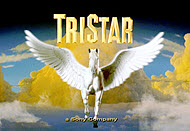Girl, Interrupted
 for strong language and content relating to drugs, sexuality and suicide.
for strong language and content relating to drugs, sexuality and suicide.
Reviewed by: Bob MacLean
CONTRIBUTOR
| Moral Rating: | Very Offensive |
| Moviemaking Quality: |
|
| Primary Audience: | Adults |
| Genre: | Drama |
| Length: | 2 hr. 7 min. |
| Year of Release: | 1999 |
| USA Release: |

| Featuring |
|---|
| Winona Ryder, Angelina Jolie, Whoopi GoldbergWhoopi Goldberg, Clea Duvall, Vanessa Redgrave |
| Director |
|
James Mangold |
| Producer |
| Douglas Wick, Cathy Konrad |
| Distributor |
“Girl, Interrupted” has much to teach about what sin is, and it painfully reminds us how we all participate in it to cause our culture to force young people into and over the brink. Thus, the first truth is that children must be the objects of unconditional love by their parents. If parents are not shooting for this goal, they should be prepared for the worst.
Overall, “Girl, Interrupted” is a disturbing film and not recommended for children, nor for sensitive adolescents because it is quite raw in places. Although I did see some older adolescent girls in the theater, some with their mothers, it was almost heartbreaking to see an audience almost entirely adolescent female as if it were some kind of banal teen movie for every girl to experience. This it is not. Ironically, just before the movie started, one twentyish year-old woman sitting with her girlfriend remarked how her family thought little of her on her visits home and said things to her that made her cry and feel unwanted. If you see this film, you may want to read “Reviving Ophelia” by Mary Pipher. They go well together.
The film’s title is brilliant. The story itself is at least fairly (I read only excerpts) close to Susanna Kaysen’s autobiographical story upon which it is based, Girl, Interrupted, Random House, 1993. In 1967 the author (“Far Afield”, 1990; Asa, As I Knew Him, 1987) admitted herself for the next 18 months of her life to a McLean Psychiatric Hospital near Boston after a single session with an overbearing doctor due to a suicide attempt. In the beginning, the movie uses flashback to take us back and forth between the hospital and her pre-institutional life to help us understand visually what was going on inside her confused, but obviously creative and gifted mind. Susanna’s journey is portrayed clearly and sensitively as she meanders constantly between the temptation to stay disturbed to shut out the pain or work her way out of it, both tasks clearly fraught with undesirable and very painful elements. She learns to make friends, to connect with herself, to want to get well all the while surrounded by a less than healthy environment. In any case, this movie cannot be viewed as entertainment by anyone save the very callused mind.
 There is much offensive material in this film both for the eye and ear. There are sexual scenes, some implied others perilously close to graphic. There are 2 scenes of partial nudity. The curse words abound as you might imagine given the venue of a mental hospital. Having worked with needy people, these words come with the territory so it’s up to you to endure them or not go. Drug use is in-your-face at every turn, both prescribed and illegal. There are graphic verbal sexual descriptions. There is a suicide scene that is arguably in context with the film, but then the camera angle changes and pushes it even further (Hollywood’s trademark). It becomes offensive and unnecessary. I would not take a child under 18 to see this movie as it delves into issues children should not be forced to deal with. Since Susanna is not a Christian, she cannot, and the film does not, offer any real answers to some very important questions. Rather is raises the human spirit up as the answer to our problems. I find this solution curious. If we had such great spirit, why do we repeatedly put ourselves into these terrible situations?
There is much offensive material in this film both for the eye and ear. There are sexual scenes, some implied others perilously close to graphic. There are 2 scenes of partial nudity. The curse words abound as you might imagine given the venue of a mental hospital. Having worked with needy people, these words come with the territory so it’s up to you to endure them or not go. Drug use is in-your-face at every turn, both prescribed and illegal. There are graphic verbal sexual descriptions. There is a suicide scene that is arguably in context with the film, but then the camera angle changes and pushes it even further (Hollywood’s trademark). It becomes offensive and unnecessary. I would not take a child under 18 to see this movie as it delves into issues children should not be forced to deal with. Since Susanna is not a Christian, she cannot, and the film does not, offer any real answers to some very important questions. Rather is raises the human spirit up as the answer to our problems. I find this solution curious. If we had such great spirit, why do we repeatedly put ourselves into these terrible situations?
Indeed, in her book she queries the vast amorphous unknown, wondering why one sick person becomes healthier and the one next to oneself does not. She sees no hope beyond herself and the human spirit.
On the positive side, the movie forces one to understand the horror of having to deal with mental illness and does not glamorize being insane. It flirts with the idea that something in us causes tender and sensitive young people to lapse into insanity if the culture does not practice unconditional love. But this is not an actual theme of the movie. It does have a few scenes which underline the goodness that comes with forgiveness. You feel a momentum in the film that roots for the sick to get better in spite of the era it happened in, one of intolerance and stereotypes. It does not rail in hindsight at the role the female was relegated to in the 50’s and 60’s, as if that era should be brought before the Supreme Court for undermining women. Rather it seems to realize each era is burdened with enough guilt that we would all be in jail together if such a cases were brought to justice.
The film making, the editing, the story line and cinematography were generally quite good. The story is compelling as is the book. I’m sure many Christians will find this too generous, but this is the opinion of someone who has worked in the emergency room and the counseling room and seen all kinds of abuse that people heap on their own flesh and blood on a regular basis.
This unusual film (as far as American made films go) had my heart aching because of what we humans to do one another. It re-galvanized me in my quest to do whatever I can to help people one at a time and to use a lot of my free time in doing so in order to spread the knowledge of a God and Savior who love us. If this film does not compel you to ask or perhaps re-ask yourself some very basic questions about how you are fulfilling Christ’s commission not just to evangelize, but to LOVE the world, you need to reevaluate whether you are living a Christ centered life.
I am genuinely torn in giving this movie a Christian rating of 2. God knows and deals with the deepest horrors we visit upon one another and forgives us. We can learn from other’s mistakes. In that sense, I think this movie can be helpful. Conversely, some will find some of the content offensive. This film takes the raw side of life and deals with it. The most offensive part for me was how the parents push their children into insanity and don’t even realize it. I recommend this film to those who have and can deal with lifes underbelly. The decision to see this film is, as always, yours.


I don’t even believe Susanna was suffering from depression—as a sufferer of major depression for more than 10 years I am an expert in the signs and symptoms of it. At not one stage in the film does Susanna’s emotional or cognitive responses indicate depressive disorder. To be sure, she is the victim of heartless parents and teachers, and she is going through a troubled and painful “what am I going to do for the rest of my life” stage, but this does not call for her to be labelled as “mentally ill.” Her psychotic episode is a once-off and is no justification whatsoever to be sentenced to Claymore. I use the word “sentenced” because Claymore is more like a prison than a place of rest and rehabilitation. The involuntary holding of Susanna there for 18 months is in gross violation of UN human rights for the mentally ill.
Despite the suffering she endures at the hands of the Claymore staff, Susanna emerges as somewhat of a hero. She seems to leave the institution without any overt bitterness or hatred towards those who imprisoned her; and her compassion to the end for the evil and seductive Lisa is extraordinary. What I hope others will get out of this film is a greater sense of compassion towards we who are mentally ill, after all the mentally ill are the most marginalised and stigmatised group in society. [2½/4]
